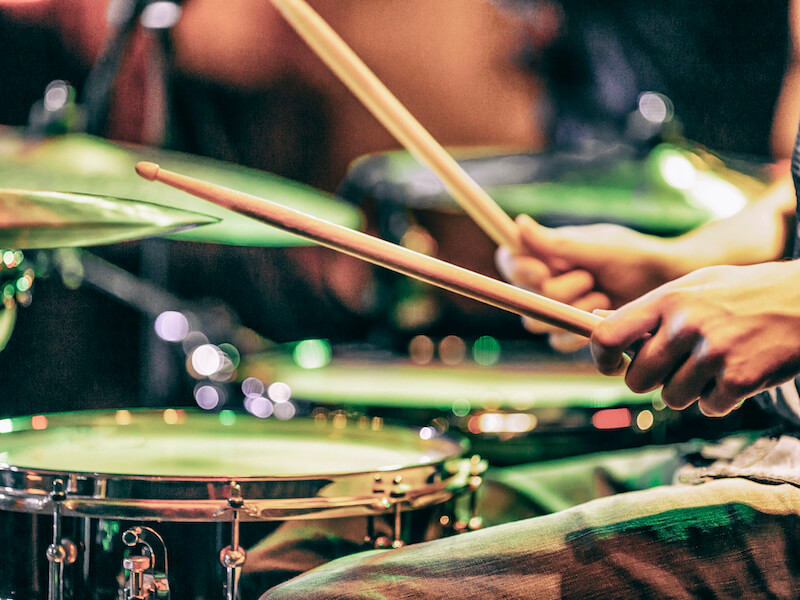
Musicians rock. Their songs bring us so much enjoyment. The downside is that music is almost always loud, in fact, many individuals like it better that way. Since musicians expose themselves to loud music on a daily basis, their hearing is at an increased risk of being damaged.
As you get older, you’ll still want to be capable of enjoying your favorite music whether you’re a musician or not. For musicians, safeguarding their hearing is the key to a lengthy and successful career. Ear protection is also key to a lifetime of musical fulfillment for everyone.
Sometimes it can be surprising how loud music can get
Most people would say that a jet engine is really loud.
But what about music? People might not be so fast to answer that question if you ask them if a violin or acoustic guitar is loud. Usually, when they hear the answer, they’re pretty surprised: That can also be very loud music! Your ears can even be damaged by classical music which can reach relatively high volumes.
Sounds louder than 90 dB can be created by a violin, for example. That’s around as loud as a leaf blower. In Europe, for instance, they have regulations that require hearing protection for anyone who works in a setting where there is noise louder than 85 dB.
And if you’re working with music on a daily basis, constant exposure to that sort of volume, especially without ear protection, can severely damage your hearing over time.
How can you safeguard your hearing?
Okay, now you know that musicians need to safeguard their hearing (particularly if they want to go on rocking out for years to come). So what can musicians do to protect their ears and still take pleasure in the music they enjoy so much?
Here are a couple of strategies:
- Take breaks: Your ears are the same as any other part of your body: they can be overworked and will frequently benefit from a break. So take regular breaks from the noise. In this way, noises won’t overpower and harm your ears. With regard to hearing, how long you’re exposed is almost as significant as how high the volume is. The difference between the ideal amount of stimulation and too much can depend upon taking regular breaks.
- Track your volume: Everybody knows the old saying “knowledge is power”. So it makes sense that you should always be aware of what volume of sound you’re exposing your ears to. Usually, this is as easy as keeping track of your volume settings on amps and receivers. But you can also track day-to-day volume levels of environmental noises using a volume meter app that you can download on your cellphone. If the meter detects volumes above 85dB consistently, you’ll need to address this.
Use hearing protection
Using ear protection is the number one most effective way to protect your hearing. Lots of musicians are worried that hearing protection will mute the sound and effects its overall sound quality. But depending on what type of hearing protection you use, that might not always be true.
- Ear plugs made mainly for musicians: Disposable earplugs are something that’s probably very familiar to most people. They don’t always fit comfortably, but they do reliably block a lot of sound. They’re inexpensive, easy to come by, and easy to throw away. And they aren’t best suited for musicians. But earplugs made just for musicians are also available at a slightly higher cost. A specialized material and modern engineering are utilized to help these earplugs fit snuggly in the ear and minimize external noise by about 20% while maintaining the audio fidelity. This solution is perfect for musicians who require a light to moderate level of protection (and who don’t have a lot of money to invest in earplugs, or are likely to lose them).
- Electronic earplugs: The same general functionality found in non-electronic earplugs can be found in electronic earplugs. The majority of the sound will be blocked by the earplug itself. What you hear will instead be routed in by the earplug itself. This option is perfect for those who work in particularly noisy settings, and who are looking for more options in terms of volume control.
- In-ear monitors: Most music is electronic these days, or at least amplified by electronics. A device, known as an in-ear-monitor, is placed inside of your ear and passes signals in electronically. Most monitors are little speakers that fit snugly and block out most sound while playing sounds you want to hear at safe volumes. So you control the volume level and can hear sound in an accurate and clear way. In-ear monitors are practical for those who work chiefly with electronically amplified instruments.
Protect your ears, and protect your career
It’s never too late to take measures to protect your hearing, but it’s definitely a good idea to start sooner rather than later. Everyone can protect their hearing and future with ear protection solutions for every budget. Keep in mind, ear protection for a musician is an investment in your career. By doing so, you will be able to enjoy making music for as long as you want to.
Don’t quite know where to begin? Give us a call today, we can help!